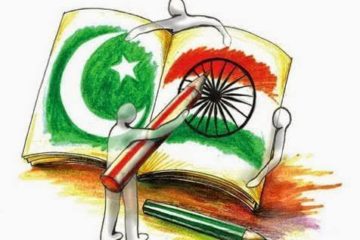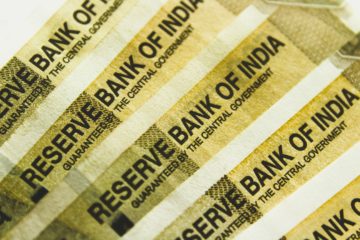On August 6th the spotlight of world media was focused on India after the parliament diluted the provisions mentioned in Article 370 of our constitution. This was followed by celebrations, agitations and widespread debates over the move. This article aims towards an apolitical knowledge about the matter to the readers.
What is Article 370 of the Indian Constitution?
Contents
It is an article in our constitution which provides special status to the state of Jammu and Kashmir temporarily. By virtue of this article, no laws and legislation made by the Union Parliament were applicable to the state unless it is extended by President with the concurrence of Jammu and Kashmir Assembly. Hence Jammu and Kashmir Assembly could decide what Union laws are applicable in their state. Many provisions such as the right to information, right to education, protection of child rights etc. were not in existence in the Jammu and Kashmir state.
Why the special status was granted?
In 1947, the Maharaja of Jammu and Kashmir decided to stay independent by not joining India or Pakistan. This was unacceptable for Pakistan considering the 77% Muslim population in the state. Soon after independence, Pakistan instigated an attack on Kashmir valley and Maharaja of Jammu and Kashmir approached India seeking military help. As Jammu and Kashmir was not a part of Indian territory yet, we rejected to help until he signs the Instrument of Accession(IOA) and gives up his title.
Maharaja left with no choice, signed the IOA but transferred powers partially. There were pro-democratic movements happening in the kingdom of Jammu and Kashmir under the leadership of Sheikh Abdullah since 1931 and it was likely that he would be the interim head of the state considering his role in the state’s politics. He was a part of negotiation processes between Indian Union and Maharaja Hari Singh.
He demanded special treatment for the state and gave authority to make laws only on Defence, External Affairs and Communication matters. The king also refused to sign the merger agreement by which a state would lose its individual identity. Hence Jammu and Kashmir entered the Union of India with a special identity.
The very next day of the signing ceremony, India troops landed in Kashmir valley and started a full-fledged war against Pakistan. Prime minister Nehru approached the UN for stopping the war. Unlike today, the UN was heavily influenced by the USA which was in favour of Pakistan. Hence the UN resolution was abandoned.
Meanwhile in India, the Constituent Assembly was fabricating the constitution of India. With partial power transfer, full-fledged war and issue tabled at the UN, the members of the Constituent Assembly were confused regarding the status of Jammu and Kashmir in India constitution. At this moment, article 370 was inserted in the constitution which established a link between the union of India and the state of Jammu and Kashmir as per the talks. But this was inserted as a temporary provision.
Why was it considered impossible to revoke article 370?
Soon after winning the war against Pakistan, India had to show to the world that it had not annexed Kashmir in duress. Hence as per the agreement, a constituent assembly of Jammu and Kashmir was formed to frame the constitution of Jammu and Kashmir. This assembly finished framing the constitution for Jammu and Kashmir in 1956 and it dissolved itself. The real fix was here.
In the article 370, there was also mention of how the article 370 can be revoked. For this to happen there must be a concurrence of constitution assembly of Kashmir. But it had already been dissolved in 1956. Hence it was considered practically impossible to revoke article 370.
How did the government revoke it then?
The term ‘constituent assembly of Jammu and Kashmir’ was replaced with the term ‘legislative assembly of Jammu and Kashmir’. A legislative assembly is nothing but the state government. But Jammu and Kashmir was under President’s rule as there was no stable majority in the house.
Hence by this government could overcome all the hurdles in abrogating article 370.
Was J&K the only state to enjoy such provisions?
Currently, 11 India states enjoy similar special status such as separate laws, special provisions for development, land purchase laws etc. these states include Nagaland, Himachal Pradesh, Mizoram, Manipur, Andhra Pradesh, Telangana, Hyderabad Karnataka region, Sikkim, Assam etc.
What is Instrument of Accession and Merger agreement?
IOA is a document signed by a state/kingdom to join a country. They become a part of the country thereafter and their name is included in Schedule I of the constitution which consists of all the names of states and union territories.
Merger agreement: When signed by a state, it gives up all its identity such as flag, constitution (if any) etc. and merges with country completed by adopting the nation’s flag and constitution. In Jammu and Kashmir case, only the former was signed and not the latter and hence didn’t merge with India completely.
The impact of the move are awaited and we must hope for the best.
-Shabaz Khan
This article of article 370 will help those of you writing upsc. This article talks about article 370 before and after. For more posts in the category Mera Bharath Mahan, click here



10 Comments
Santosh Bhonsle · June 1, 2020 at 2:00 am
This article helped understand the issue of article 370 very clearly. There was no B.S but straight up facts, something that even most news channels fail to achieve.
₹ vs $: HOW IT WORKS – Wordanova · September 23, 2019 at 5:31 pm
[…] Article 370: All that you need to know – Episode 3 […]
My Homepage · October 27, 2019 at 10:02 am
… [Trackback]
[…] Read More Infos here: wordanova.com/article370/ […]
แต่งงาน · December 15, 2019 at 4:39 pm
… [Trackback]
[…] Info on that Topic: wordanova.com/article370/ […]
Capital punishment & Mercy Plea: Explained! – Wordanova · January 16, 2020 at 11:28 pm
[…] Article 370: All that you need to know […]
Indian Election 2019 - It's Time to do your Duty – Wordanova · January 20, 2020 at 7:36 pm
[…] Article 370: All that you need to know […]
Mera Bharath Mahan - Episode 2 – Wordanova · January 21, 2020 at 2:43 pm
[…] READ: ARTICLE 370 […]
Mera Bharath Mahan- Episode 6 Quiz – Wordanova · January 21, 2020 at 2:47 pm
[…] READ: ARTICLE 370 […]
PSUs & it's Privatization: An Analysis – Wordanova · June 6, 2020 at 6:05 pm
[…] you Know What the Reserve Bank of India (RBI) does? Rupee VS Dollar: HOW IT WORKS Article 370: All that you need to know Capital punishment & Mercy Plea: Explained! Categories: Mera Bharath mahan Tags: […]
MBM - Episode 7 Quiz – Wordanova Mera Bharath mahan · July 6, 2022 at 1:26 pm
[…] READ: ARTICLE 370 […]